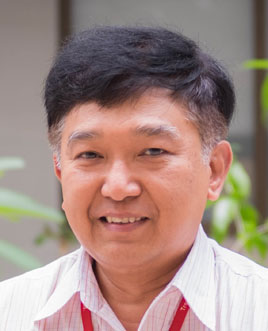Publications
Dr. Paron Dekumyoy has a total of 94 publications. The full list can be seen here.
Selected Publications
Diagnosis of gnathostomiasis by skin testing using partially purified specific antigen and total IgE levels.
Maek-a-nantawat W, Bussaratid V, Phonrat B, Pakdee W, Nuamtanong S and Dekumyoy P.
Trans R Soc Trop Med Hyg. 2014 Feb;108(2):71-6.
DOI:10.1093/trstmh/ trt118.
Genotypic relationships between Taenia saginata, Taenia asiatica and their hybrids.
Yamane K, Yanagida T, Li T, Chen X, Dekumyoy P, Waikagul J, Nkouawa A, Nakao M, Sako Y, Ito A, Sato H, Okamoto M.
Parasitology. 2013 Nov;140(13):1595-601.
DOI: 10.1017/S0031182013001273.
Discovery of Opisthorchis lobatus (Trematoda: Opisthorchiidae): a new record of small liver flukes in the Greater Mekong Sub-region.
Thaenkham U, Nuamtanong S, Vonghachack Y, Yoonuan T, Sanguankiat S, Dekumyoy P, Prommasack B, Kobayashi J, Waikagul J.
J Parasitol. 2011 Dec;97(6):1152-8.
DOI: 10.1645/GE-2764.1.
Systematics of the subfamily Haplorchiinae (Trematoda: Heterphyidae), based on nuclear ribosomal DNA genes and ITS2 region.
Thaenkham U, Dekumyoy P, Komalamisra C, Sato M, Dung do T, Waikagul J.
Parasitol Int. 2010 Sep;59(3):460-5.
DOI: 10.1016/j.parint.2010.06.009
Long-term follow-up of imported gnathostomiasis shows frequent treatment failure.
Strady C, Dekumyoy P, Clement-Rigolet M, Danis M, Bricaire F, Caumes E.
Am J Trop Med Hyg. 2009 Jan;80(1):33-5.
PMID: 19141836
